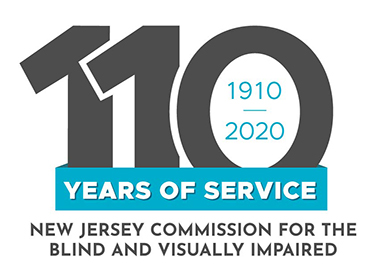
Our History
In April of 1909, the New Jersey Commission for the Blind and Visually Impaired was directed by the state Legislature "to provide any and all means which shall be deemed feasible for ameliorating the condition of the blind." Ninety years later, the Commission more than ever finds itself fulfilling that original mandate.
The formation of a single agency to administer to the needs of New Jersey's blind population was the culmination of a wave of social conscience that swept the country in the late 1800s and early 1900s. As a result, significant strides were made toward equalizing opportunities for people who were blind or who were vision impaired.
The Commission, known as the Commission for the Blind until 1982, was at the forefront of that movement and still works diligently toward the realization of new levels of achievement in the quest for equal opportunity.
Although the Commission's scope of service has significantly expanded since 1910, the direction established 100 years ago is still an integral part of today's programs and policies as well as tomorrow's goals and aspirations.
The Commission was established in 1910 under the direction of Lydia Young Hayes, a blind teacher of the blind. One of the initial tasks of the Commission was to compile a registry of the state's blind residents. During that first year, 750 people were registered. By 1970 that number exceeded 10,000.
Miss Hayes and another teacher, Janet Paterson, established the state's first integrated classes for blind and sighted students within the Newark school system during that first year, 1910. These classes were based on the belief that integrated classes provided blind students with the educational tools and exposure necessary for a smooth assimilation into society.
This educational policy was recognized throughout the country as an innovative model in the field of education of the blind. Under the supervision of Josephine Taylor from the early 1940's to the late 1960's, the Commission's evolving educational programs, known by then as the New Jersey Plan, gained world-wide recognition. This system of supporting blind and vision impaired students in public schools and sending teachers to assist them through lessons in braille, low-vision aids and special classes has grown over the years into an even more comprehensive educational service program that supported 1,500 students last year.
A Home Teaching Service Program was also installed during the first years of the Commission. Teachers went into clients' homes to help them discover ways to most productively use new techniques and their own talents to achieve self-sufficient lifestyles. This program offered instruction in communication skills such as braille and typing, and included guidance in the production of marketable crafts and handiworks. These latter skills led to the creation of a Home Industries Program which functioned as an agent for the sale of blind-made products.
In 1915 the Commission began a program to place blind workers in industry, capitalizing on openings resulting from World War I Armed Services recruitments. Federal and state legislation offered additional support to the Commission's early employment and social service programs. This legislation was designed to provide legal and economic leverage to agencies that served the handicapped, such as the Commission.
Broadened by major amendments (the Barden LaFollete Act) in 1943, earlier federal rehabilitation legislation (the Smith-Fess Act of 1920) provided funds and authorized state agencies to help blind and vision impaired clients obtain meaningful employment through vocational training, counseling, physical restoration and placement service. Federal and state funding for medical, surgical and other physical restoration services have also helped to augment the Commission's rehabilitative programs.
Direct financial assistance to blind individuals was also made available through the Commission as early as 1921 (New Jersey Relief Act). Although these programs have been absorbed by the Social Security Administration, the Commission still provides extensive guidance and consultation to blind and visually impaired clients regarding their rights and obligations. This helps to insure a fair and equitable disbursement of available funds.
Basic legislative mandates and their various amendments allowed the Commission to vastly enhance its services during the middle period of its 75-year growth under the direction of George Meyer (1936-1964).
Next Page